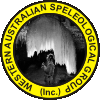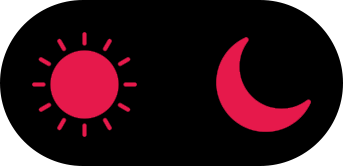 |
| A young James Henry Arthur MacDougall Photograph supplied by Anne Pollitt. |
James Henry Arthur MacDougall was a cave photographer near the turn of the 19th to 20th century. His cave photography covered caves at Buchan in Victoria and also the South West of Western Australia. His photographs document the condition of caves in the South-West of Western Australia between 1913 and 1916. The majority of his cave photographs were stereographs taken with a special camera with two lens (see images below). His images are also important from a cave photography perspective as he was one of the first cave photographer’s to use side lighting to provide depth and highlighting of cave formations.
This web page documents some of MacDougall’s life history as well as the cave stereographs that he took in Western Australia. The individual photos on the stereos are 7cm wide and mostly 8 cm high (some 8 1/2 or 9 cm high).
Please read on for his biography as provided by JHA MacDougall’s granddaughter Anne Pollitt. The following links are to scans of a number of his stereographs of Western Australian caves, also courtesy of Anne and David Pollitt (Anne’s Son). When you are looking at the stereographs of Western Australian caves if you have any information about them or just wish to comment please add a note, which can be left below the image.
JHA MacDougall's WA Stereographs
Biography
Born Eaglehawk, Bendigo, Vic 23/5/1880; died Weston NSW 24/1/1944 aged 63.
His mother was widowed at age 24 and later remarried William Davey and had more children. The Davey family moved to Fremantle about 1899 or 1900, and JHA's mother died there in 1903. Jim did not go west with the Davey family. One of his jobs as a teenager was working for a doctor, delivering medicines, and he was run over by a wheel of the doctor's vehicle and suffered a broken pelvis. This resulted in one leg being shorter than the other and gave him a permanent limp. Perhaps this made him a little less agile while exploring caves. (and didn't give him any love of doctors!) One of his daughters stated that “he hated going to doctors, but whenever anyone else in the family had medicines he would take some in case it did him good!”)
He went to a theological college in Adelaide, but apparently told the Dean he was a hypocrite and left, unordained as a minister but still able to work as a Home Missionary. The years of his studies are unknown, but a letter dated Jan 1902 (when he was 21) indicates that he was already preaching. It was probably as an itinerant Home Missionary in Gippsland, Victoria, that he met Mary Jonson, who introduced him to photography and became his wife. The following is from the report of an interview that Anne Pollitt did with Mary Macdougall not long before her death in 1964:
"She took up photography, on a big enough scale that she sold postcards and the hobby paid for itself. Plates, not film, were used. A big box with a blanket as a doorway, shelves and red glass in a hole to let light in served as a darkroom where she developed her own sunprints. When men were cutting beams from the property, Mary took pictures of beams and timber, and lantern slides of these were taken and sent to England for advertising and lecturing. After they were married, she relinquished her photography, becoming less enthusiastic about his photography because he spent more than he made.”
JHA had a variety of jobs throughout his life, in particular the ministry (Presbyterian and Congregational) and farming. Photography was a sideline. While Postmaster at South Buchan in Victoria he also set up his photography business, which he called Walden Studio. It was named for Thoreau's "Walden", one of his favourite books. He sold postcards and stereographs and booklets, and gave lantern slide shows. He would get carried away exploring and photographing in Buchan Caves and forget the time so that Mary would be frantically worried that he had come to grief underground. He used magnesium tape for lighting. A photograph of him with Frank Moon (the discoverer of Fairy Cave) and others at the entrance to Fairy Cave shows him emerging with an acetylene lamp.
To quote Elery Hamilton-Smith (a well known Australian Karst Historian) , "He had unusual expertise in cave photography, showing texture and detail of a quality not matched until the 1950's." His photos in WA caves are also on Walden Studio backing cards, so he used the same business name there. It's pretty obvious that cave photography was his passion, but he photographed other subjects as well. He combined his job as an insurance salesman in Lismore NSW with taking photographs of family, horses, etc, for people on properties. He did articles on wildlife illustrated with photographs for school papers; for example one of these had a series of photos showing a cicada emerging from the old skin. His photos of a huge fire in Lismore were published in the local newspaper. Anne Pollitt has a small number of his glass plates.
JHA lived in Fremantle for about 3 1/2 years, from late 1912 until early 1916. He was minister at the Fremantle Congregational Church, and possibly also at the "Free Christian" church. He probably started the “Free Christian” church in Fremantle. He was a man with 'itchy feet', and it is unknown why he left Victoria and went to WA. It could have been the allure of caves to photograph, or perhaps it was something to do with his mother and step-father and half-siblings living in Fremantle. His mother was already deceased before he moved to WA.
After leaving WA, he and his growing family went to Qld, stopping off at Lakes Entrance Victoria on the way for the birth of their 4th child. It appears that the rest of his life was spent in a variety of places in Queensland and New South Wales. The family ran a cafe in Beaudesert Queensland and he set up a photography business there, calling it Beryl Studio. The name was for his daughter Golda Beryl, who he believed was the most artistic of his six children and the most likely to be involved. However it was not Golda but his eldest child Effie who caught the photography bug and took over the studio. Effie married Max Upham, and together they operated Beryl Studio. Some of Effie's and Max's photos were published in Bernard O'Reilly's "Green Mountains".



